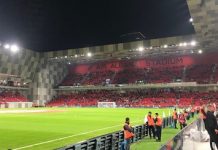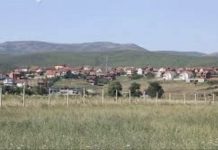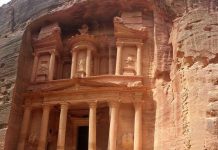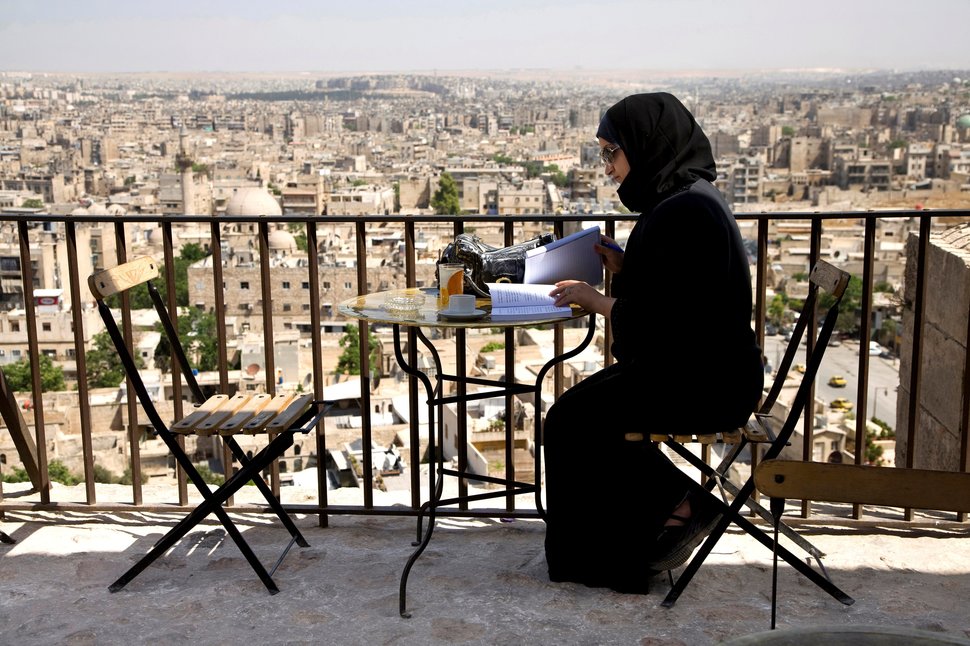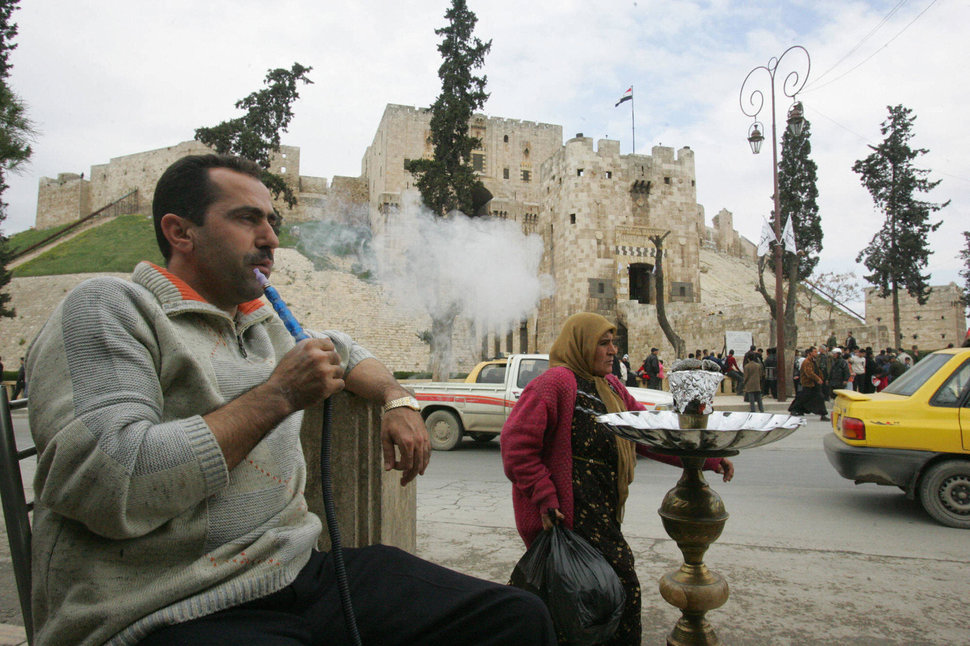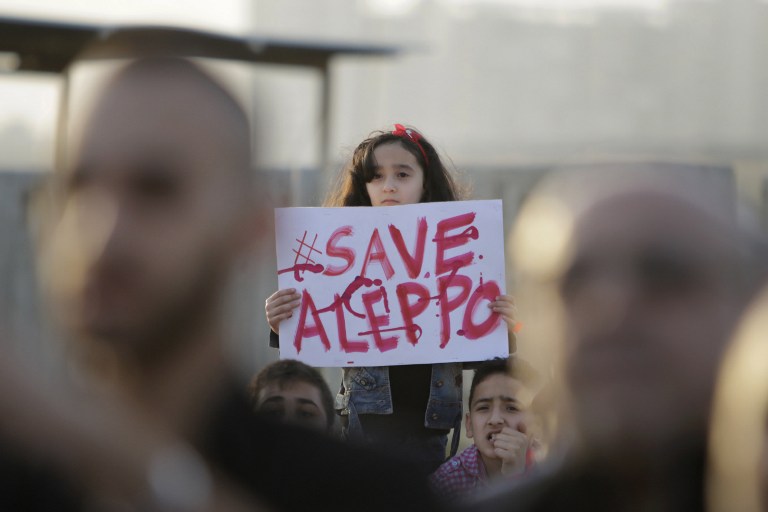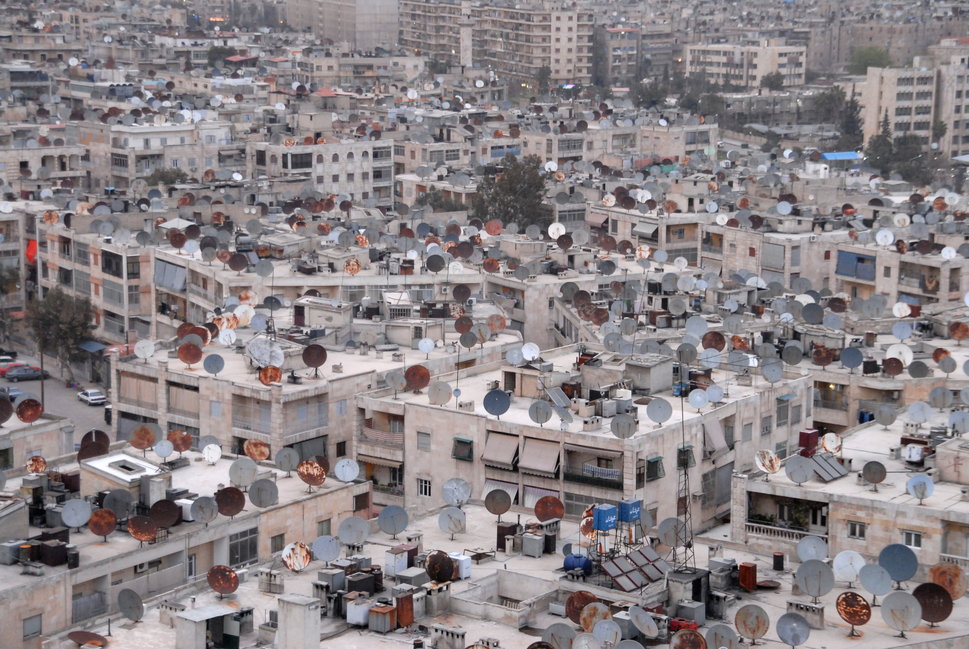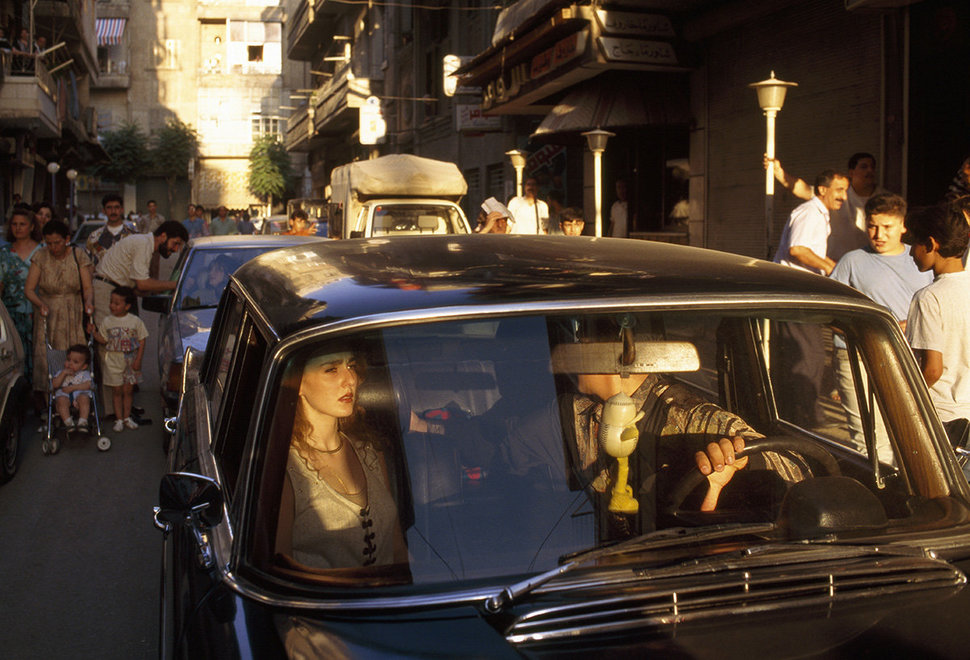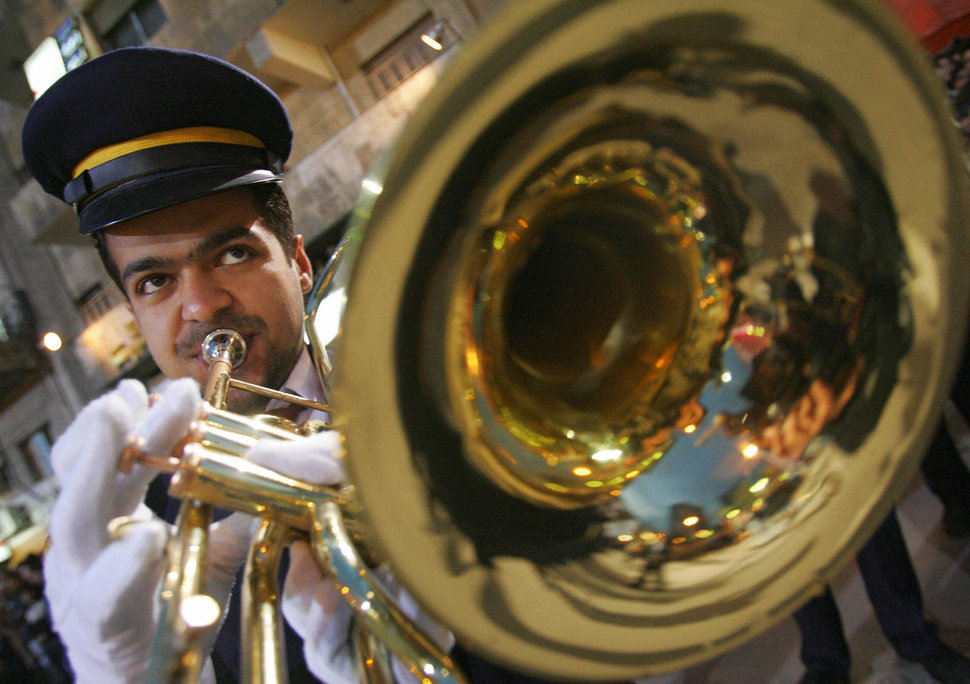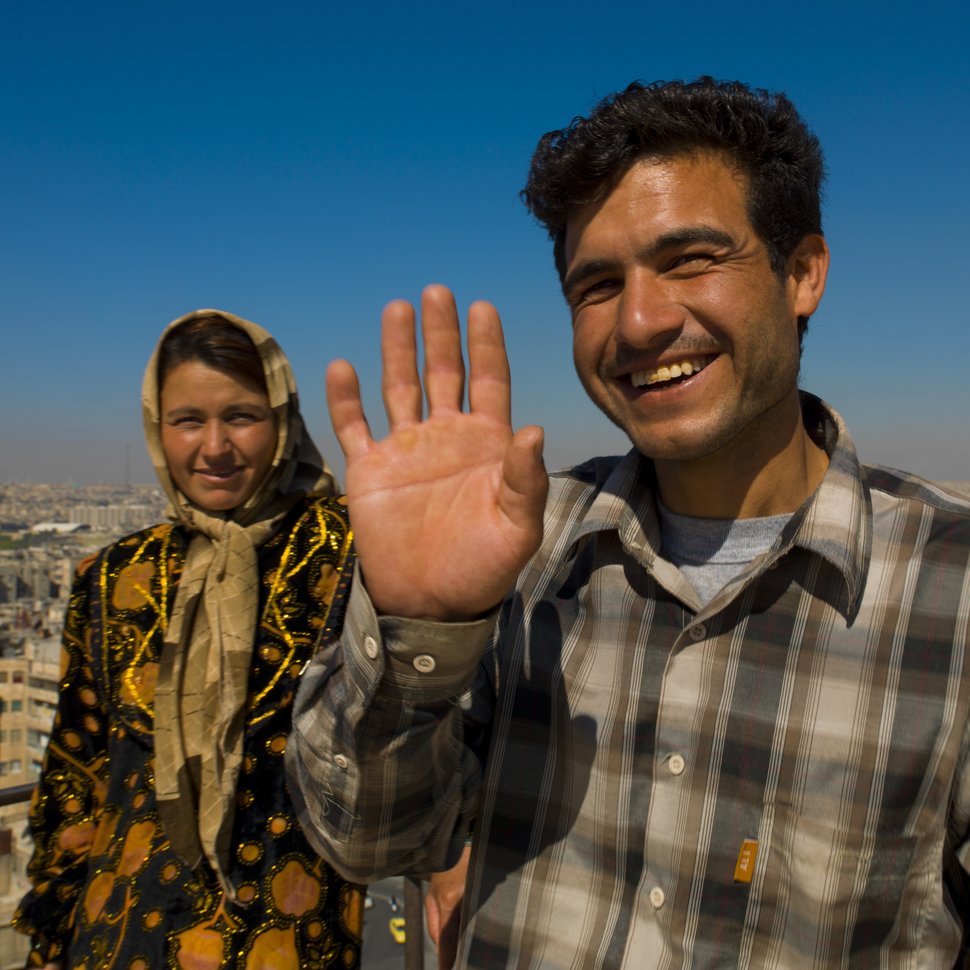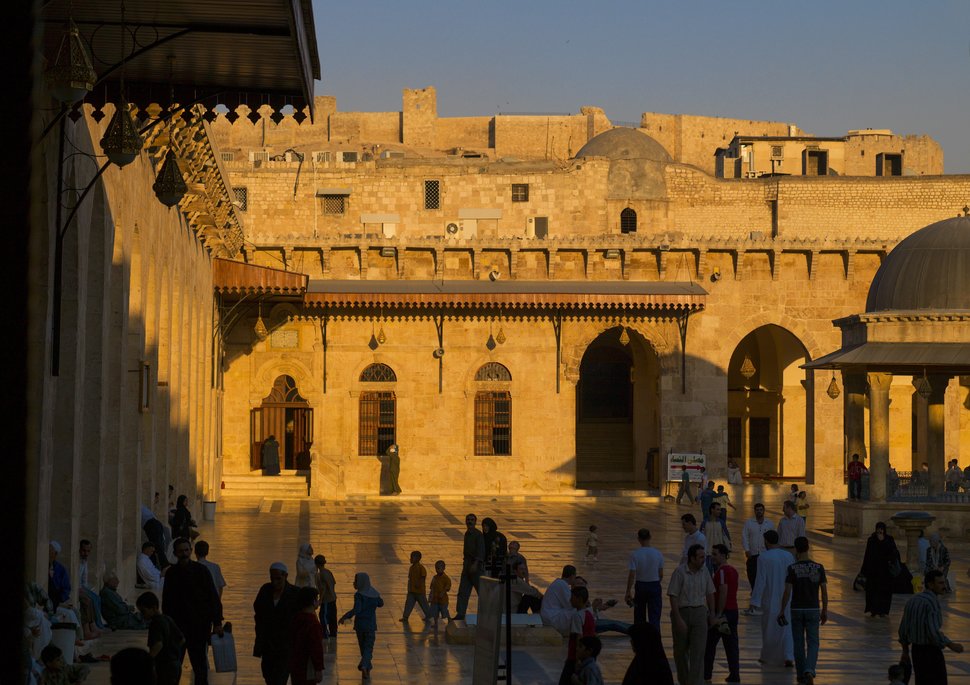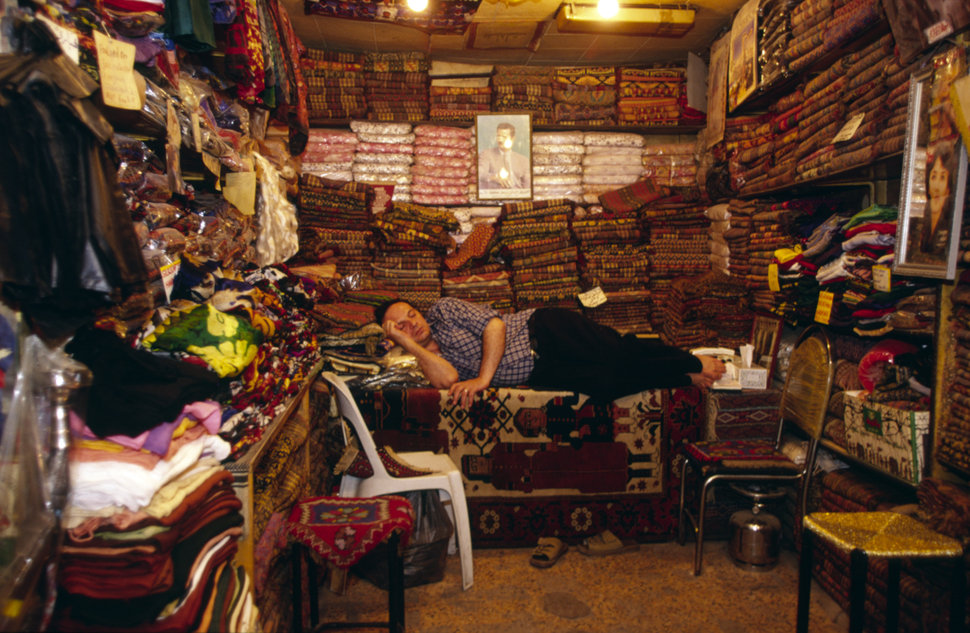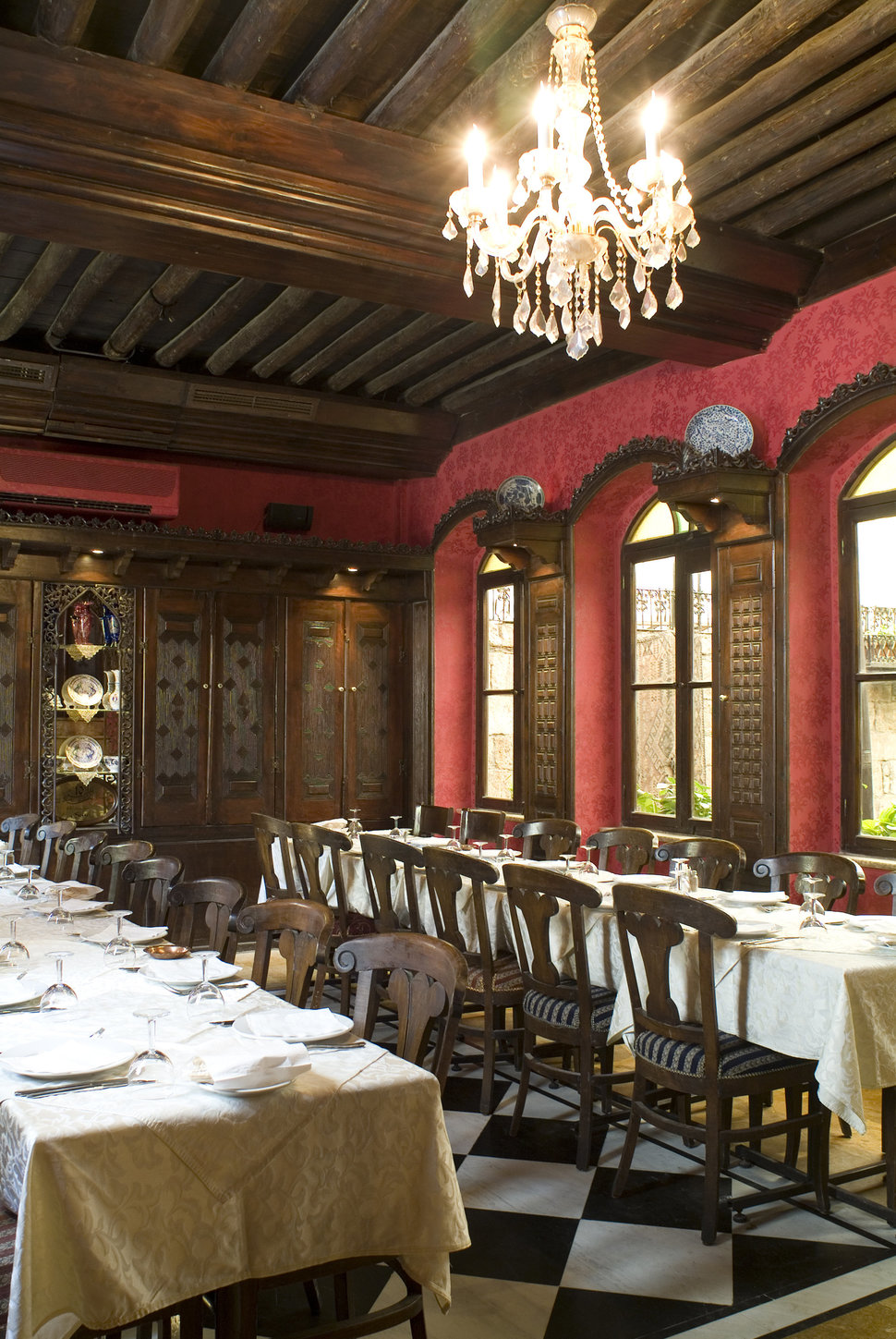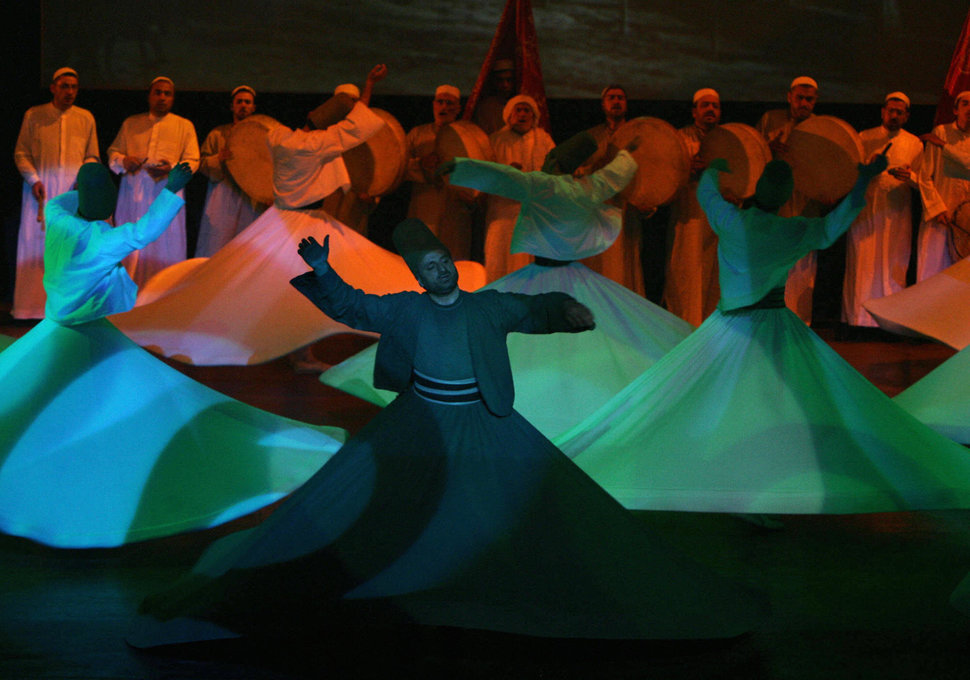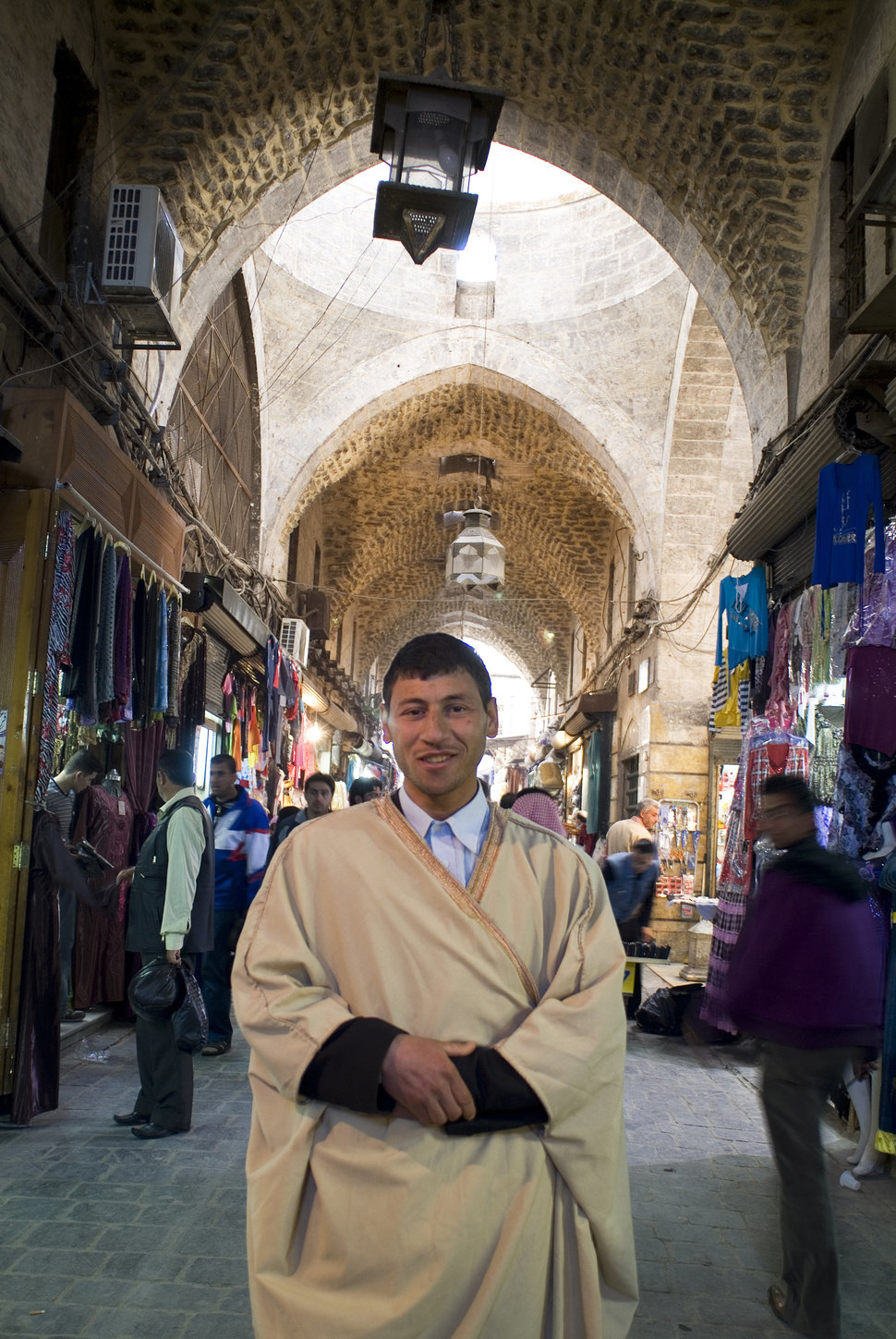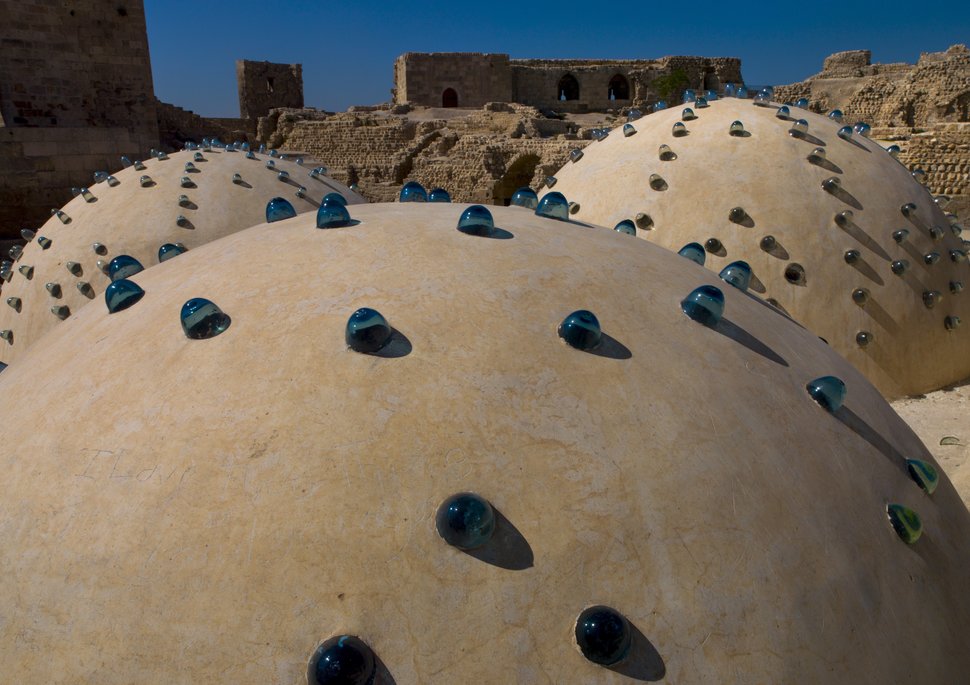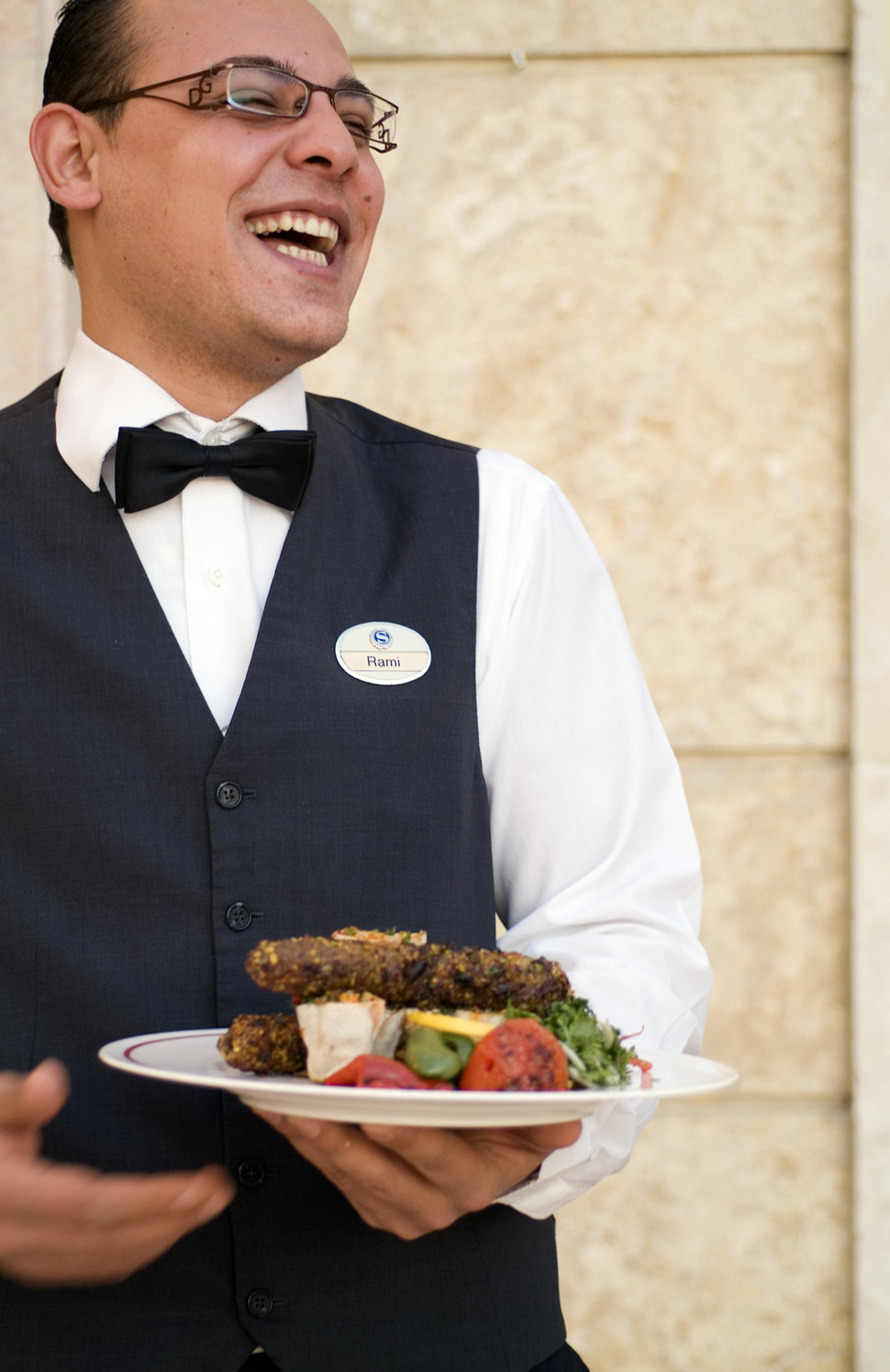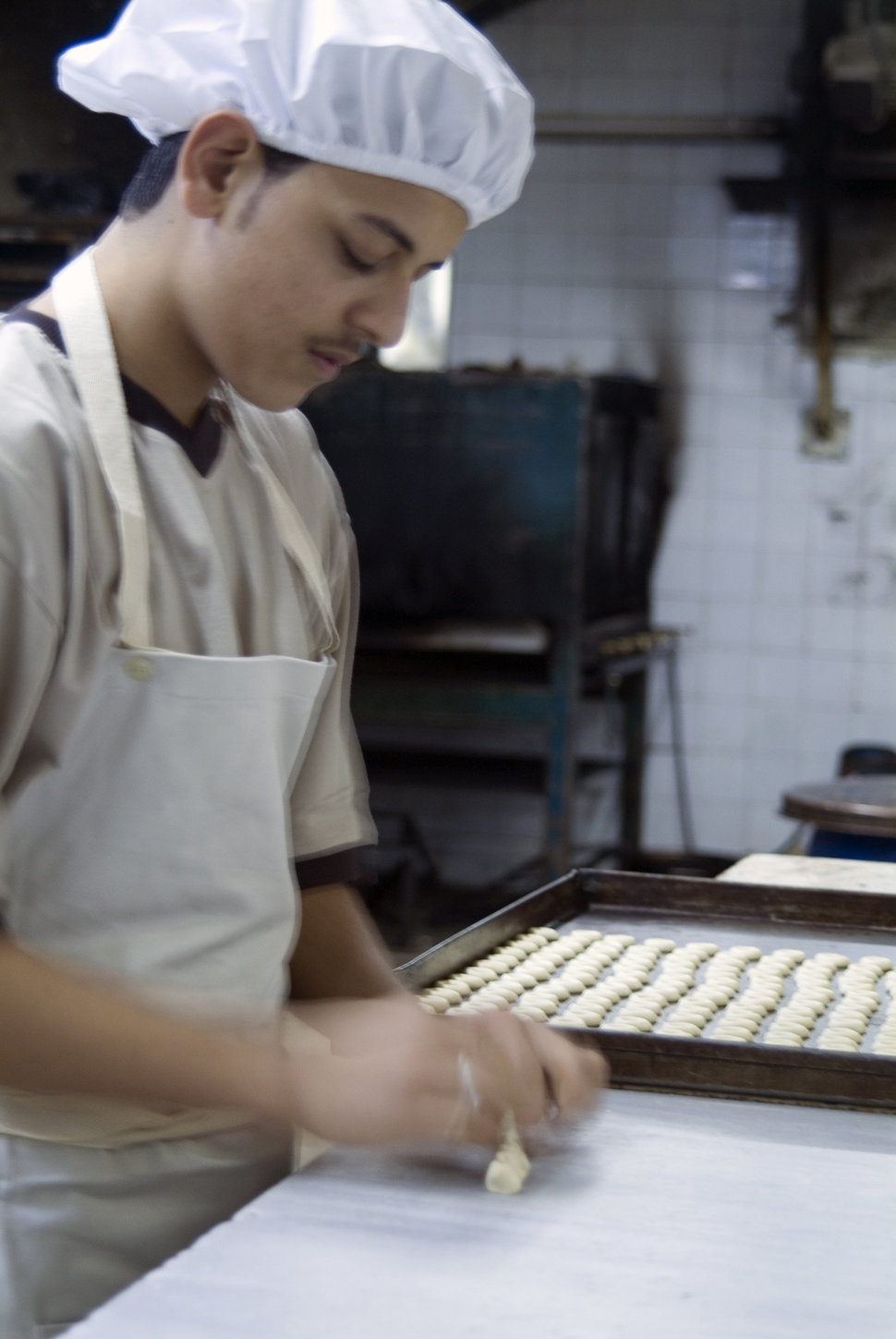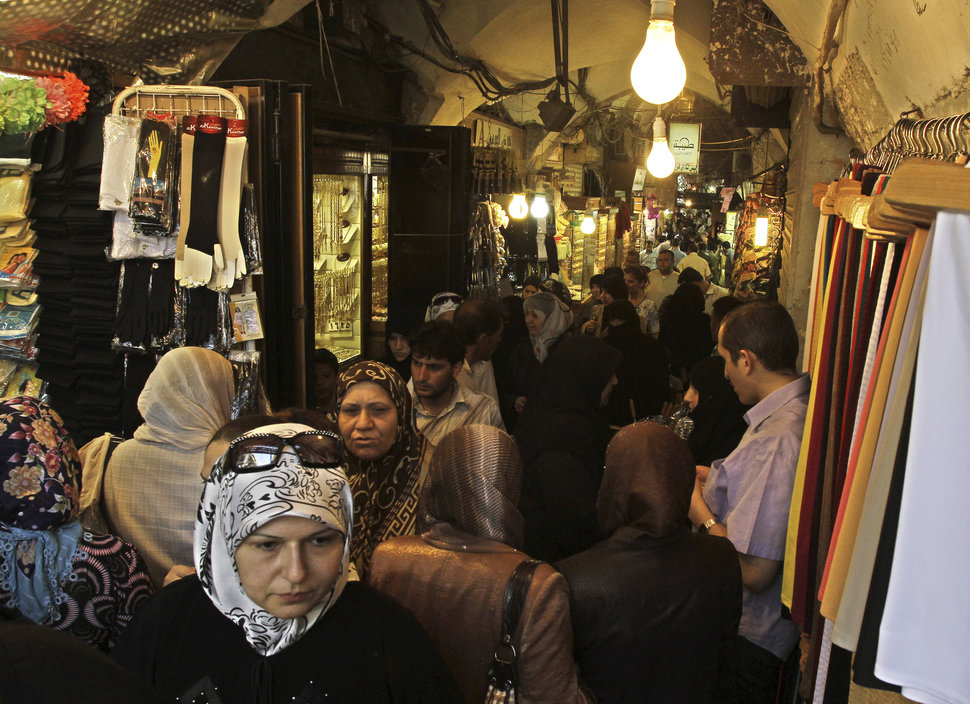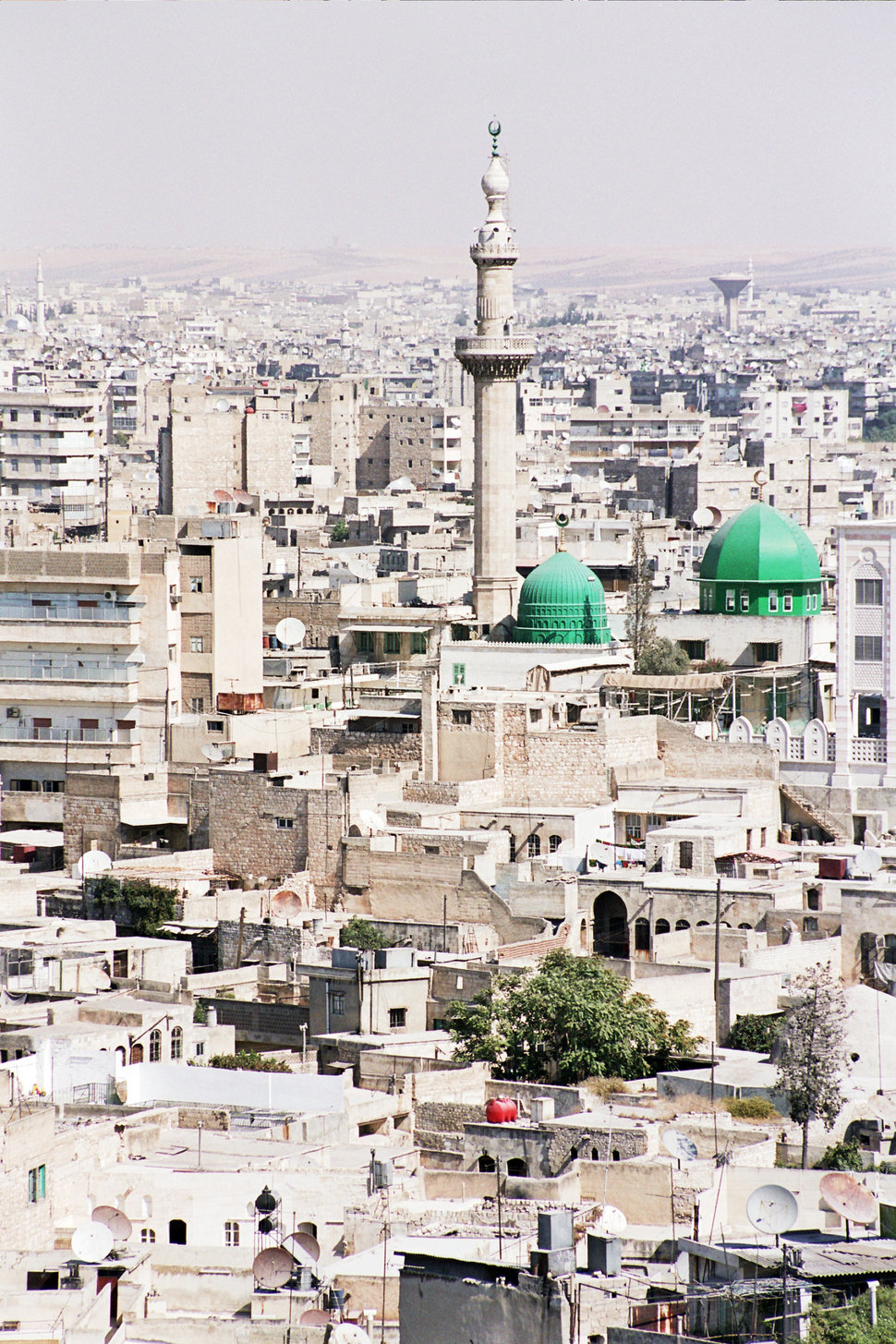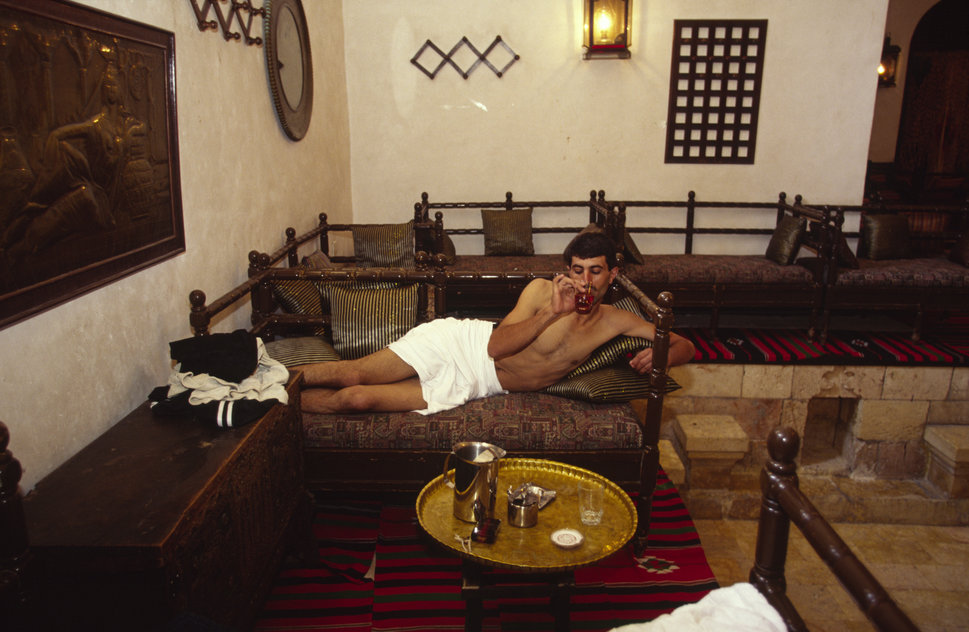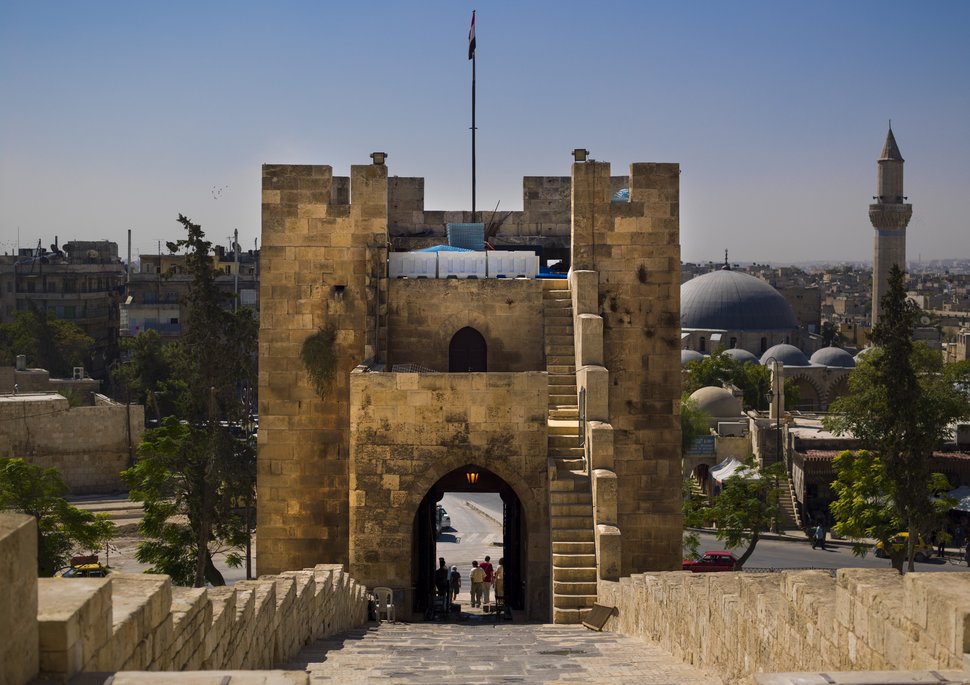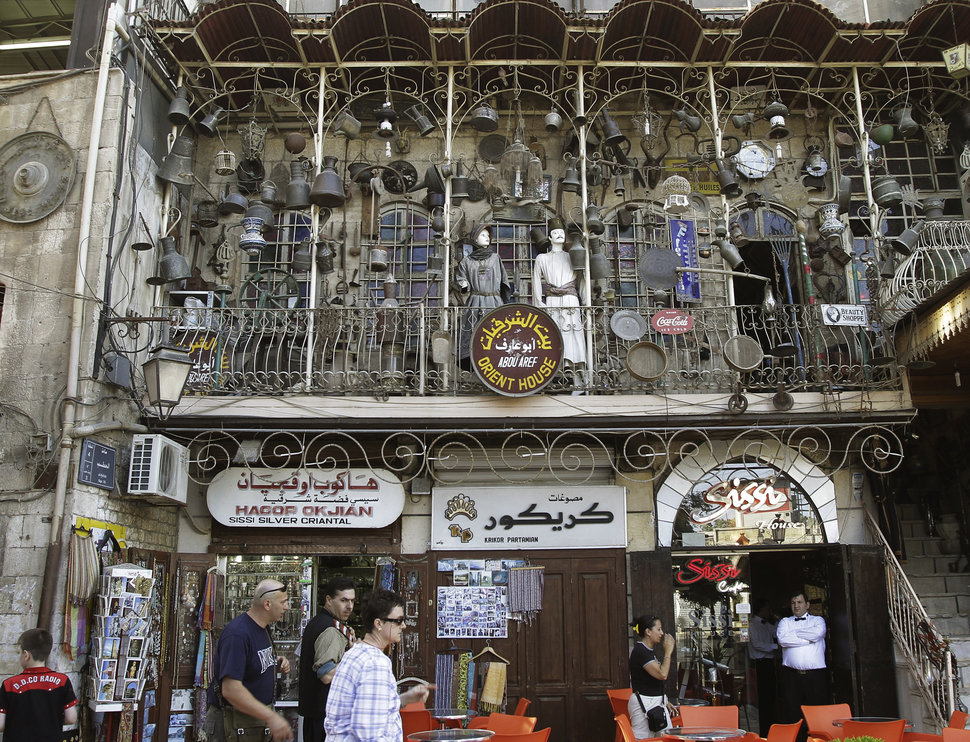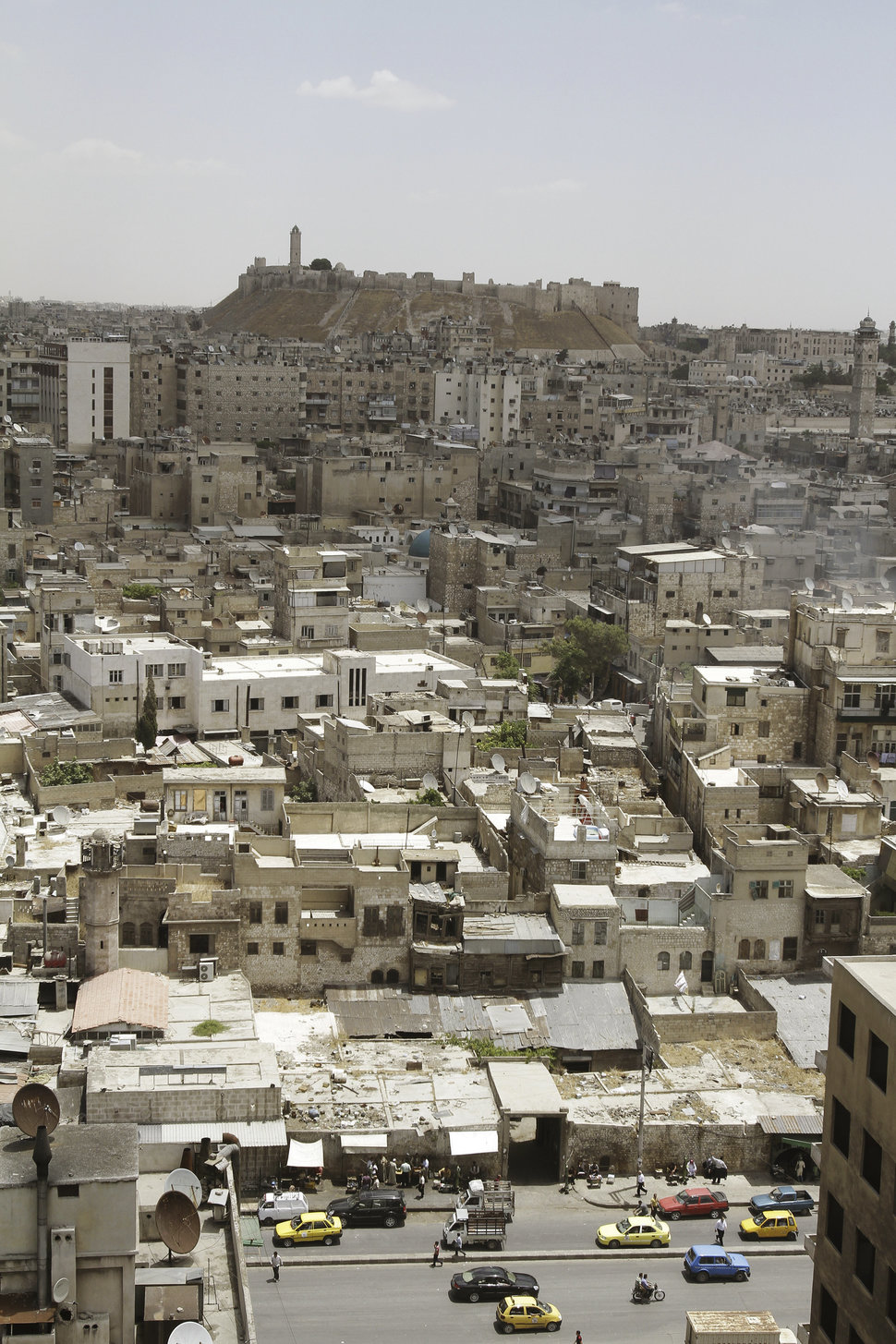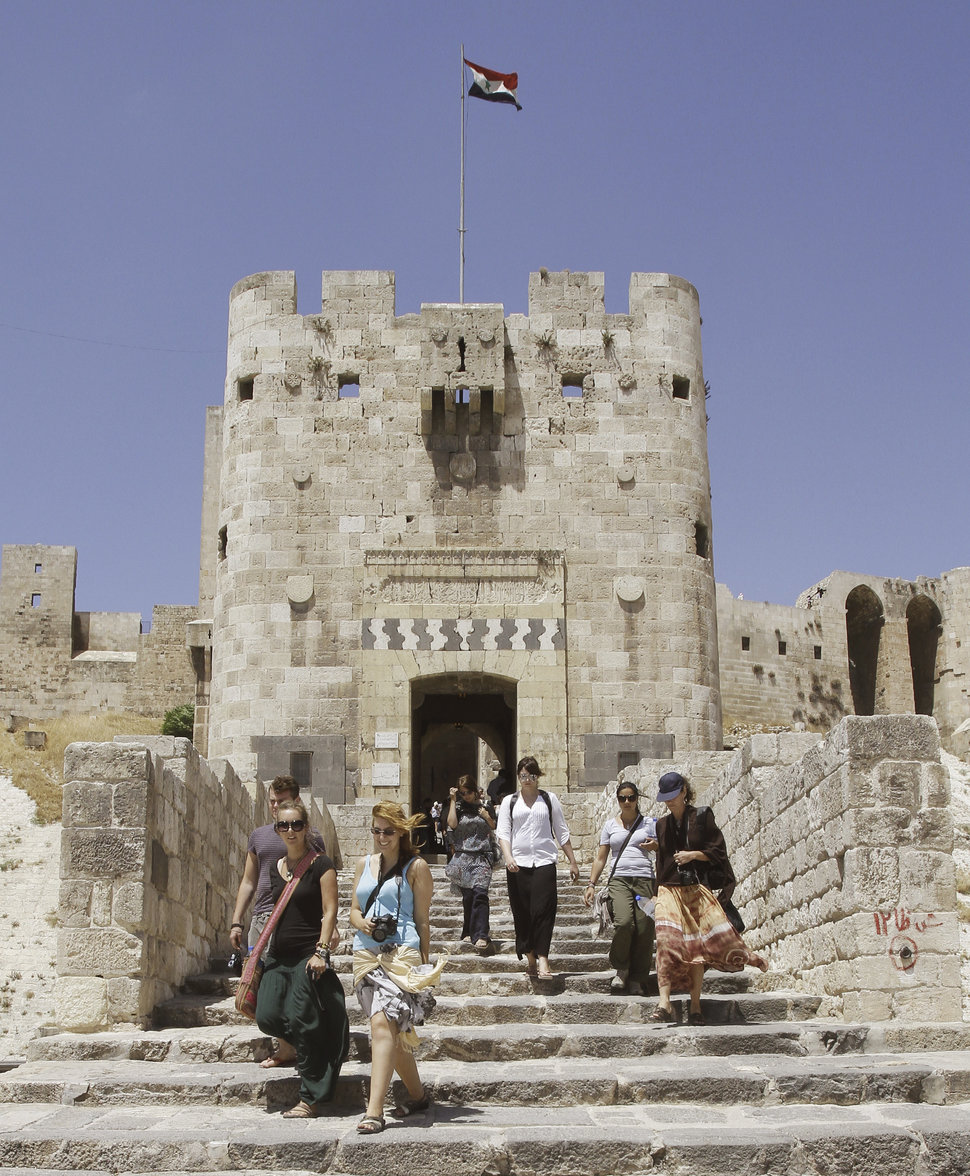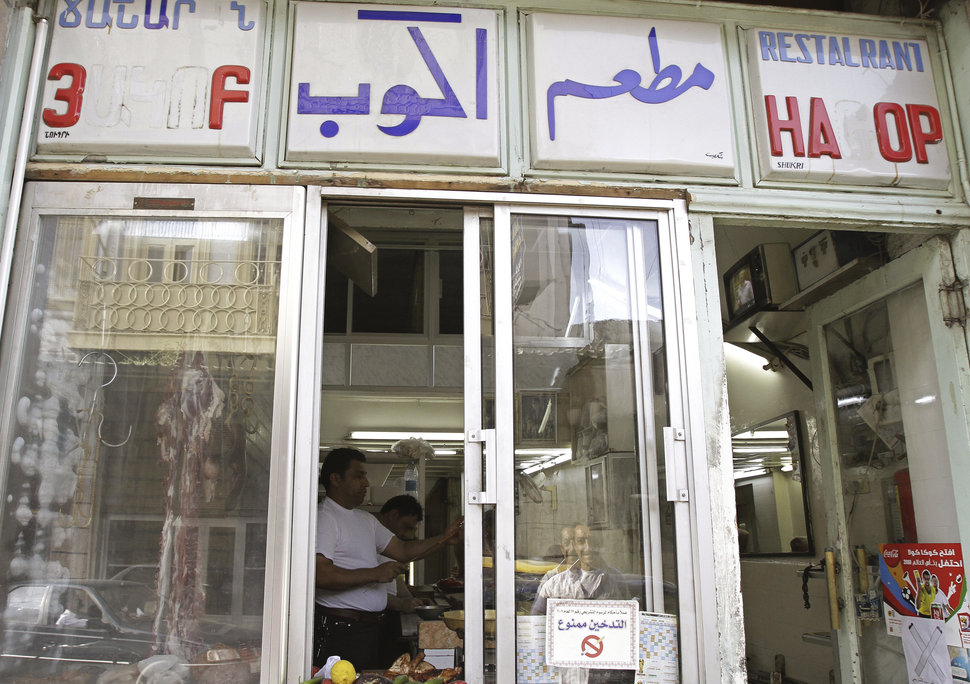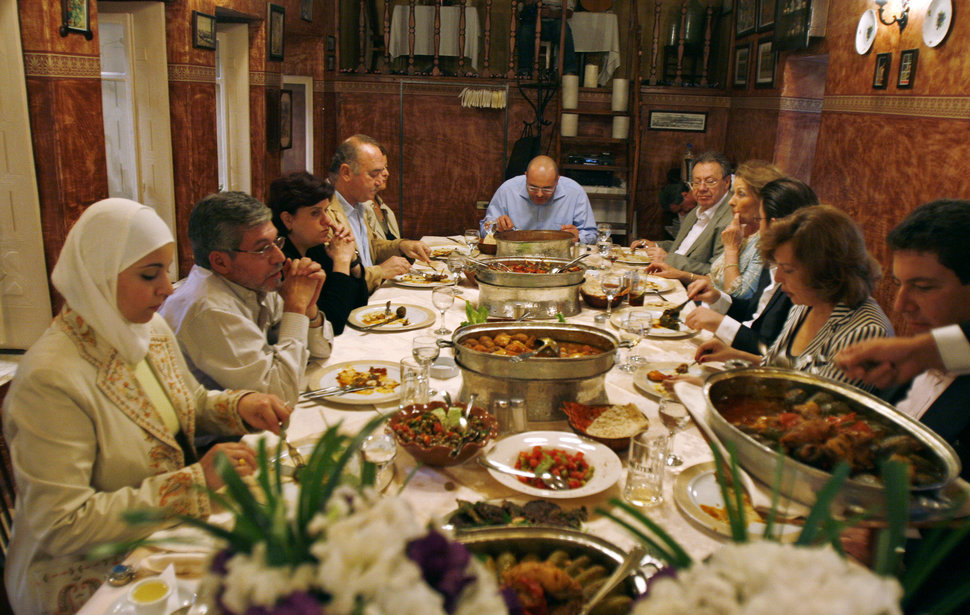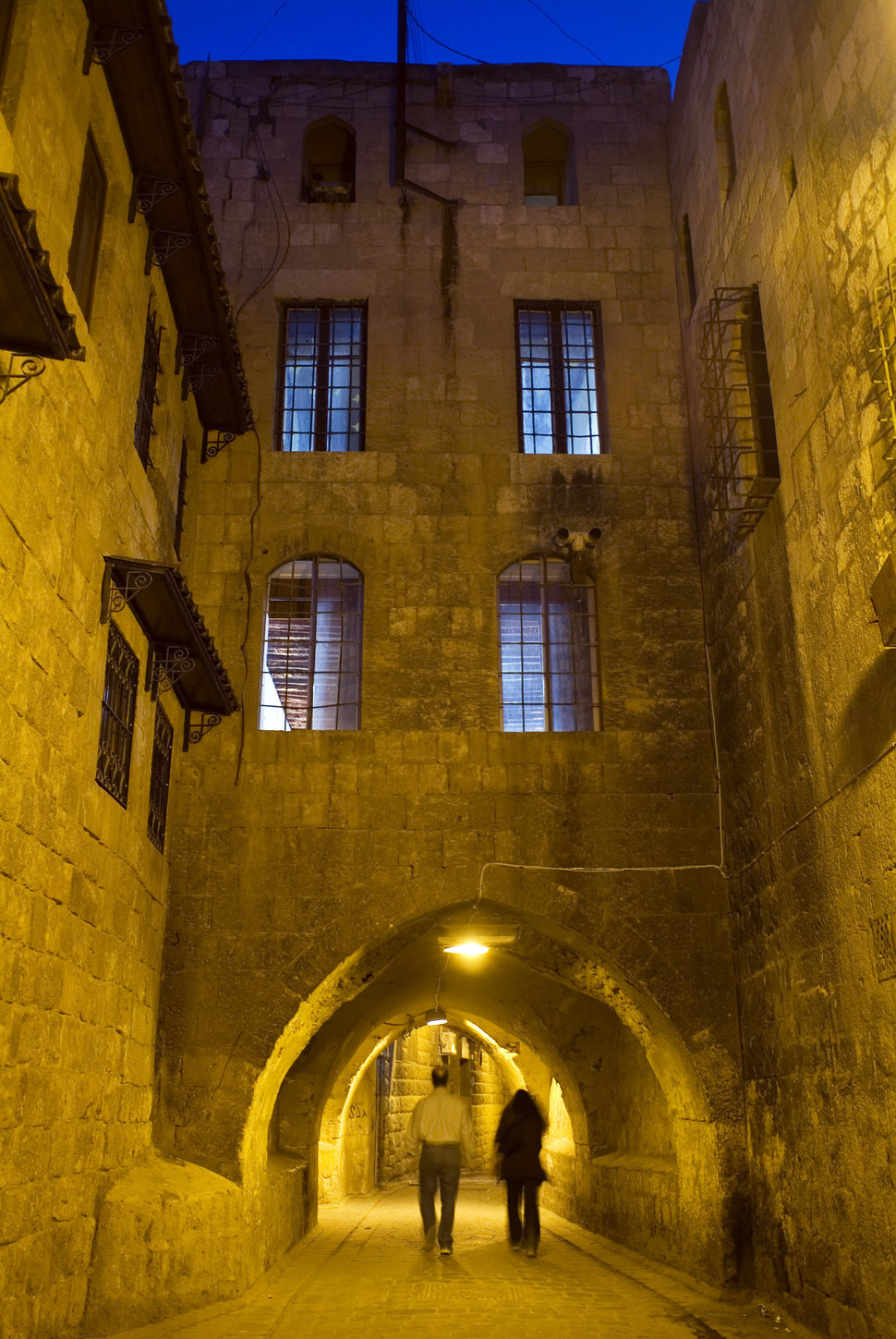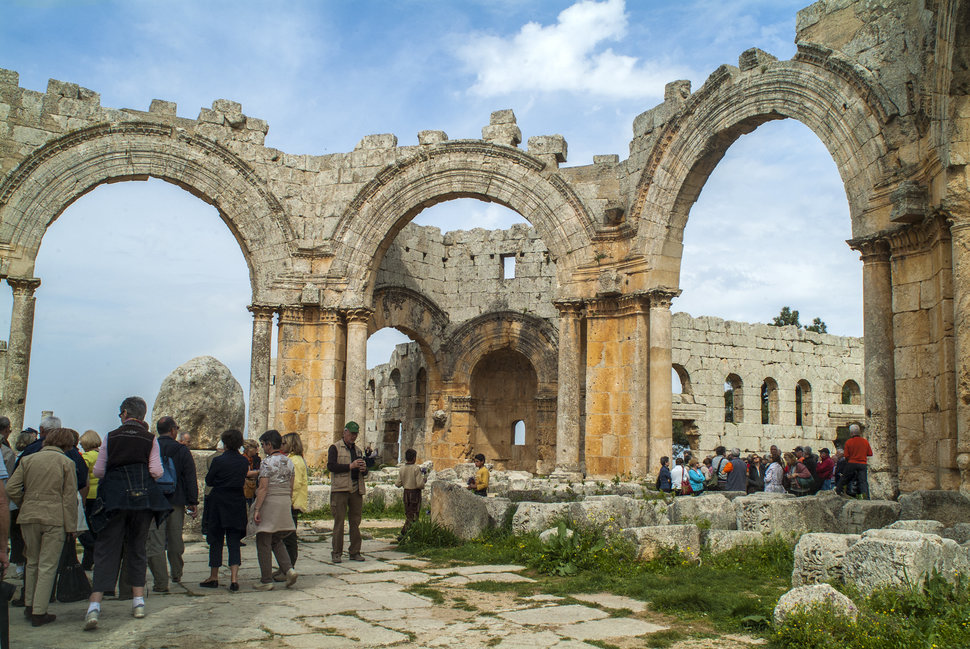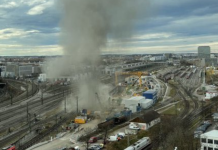Një qytet sirian, ka katër vite që ballafaqohet me një luftë të tmerrshme civile – me bombardime, shkatërrime dhe vrasje masive.
Dikur Aleppo ishte metropol i lulëzuar dhe destinacion turistik i njohur për arkitekturën mesjetare dhe historinë e pasur kulturore.
Një nga qytetet më të mëdha në Siri dhe nga më të vjetrat të banuara në botë, “Kryeqyteti i Kulturës Islame” i shpallur në vitin 2006, sot është qytet fantazmë. /Telegrafi/
Woman At A Table In A Bar, Aleppo, Syria, Middle East, Asia (Photo by Marka/UIG via Getty Images)
(GERMANY OUT) Aleppo: Blick von der Zitadelle auf dieStadt; in der Bildmitte die Moscheeal-kosrowije – 1997al-khosrowije (Photo by Ihlow/ullstein bild via Getty Images)
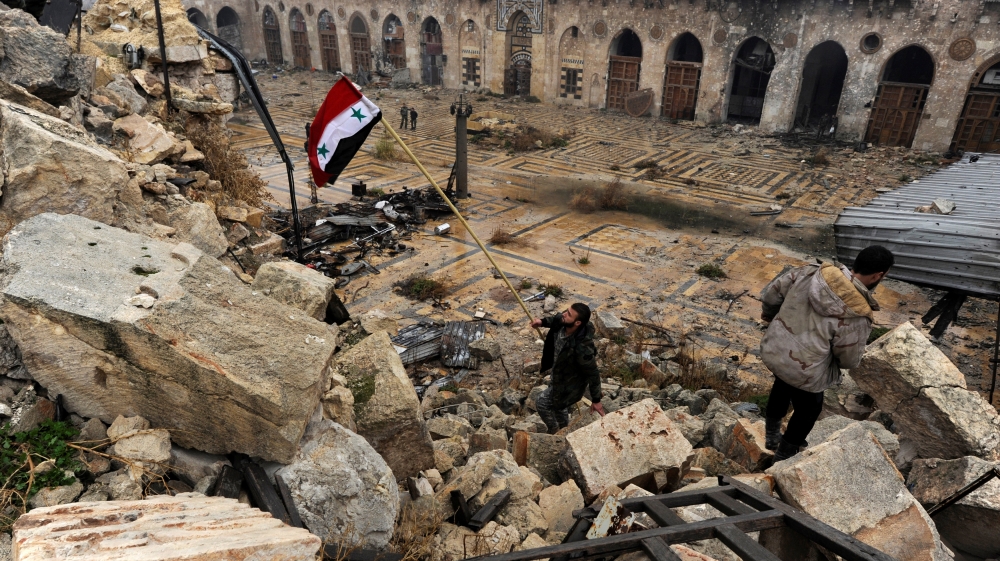
SYRIA – CIRCA 2006: Aleppo kids in Syria in 2006 – back home for ramadan diner. (Photo by Eric LAFFORGUE/Gamma-Rapho via Getty Images)

Aleppo (Alep), SYRIA: A man smokes his water pipe in front of the Aleppo citadel, an Islamic landmark and the most prominent historic architectural site in Aleppo, as the city is inaugurated today as the Arab world’s Islamic cultural capital, 18 March 2006. Syrian Culture Minister Riad Nassan Agha said yesterday Aleppo was chosen by the Organization of the Islamic Conference (OIC) because of its role as the “main point of passage between East and West.” AFP PHOTO/RAMZI HAIDAR (Photo credit should read RAMZI HAIDAR/AFP/Getty Images)
A Syrian girl holds a placard during a rally in solidarity with Aleppo, in the Lebanese northern port city of Tripoli, on May 1, 2016.
More than a week of fighting in Syria’s second city has killed hundreds of civilians and left a UN-backed peace process hanging by a thread. Concern has been growing that the fighting in Aleppo will lead to the complete collapse of a landmark ceasefire between President Bashar al-Assad’s regime and non-jihadist rebels that was brokered by Moscow and Washington. / AFP PHOTO / IBRAHIM CHALHOUB
View from the citadel of Aleppo over the rooftops and buildings of the congested city Syria (Photo by: Digital Light Source/UIG via Getty Images)
SYRIA – JULY 07: A couple in a car is stuck in a traffic jam on a bustling street, Aleppo, Syria (Photo by Ed Kashi/National Geographic/Getty Images)
Aleppo (Alep), SYRIA: A Syrian musician plays during the opening of the festival marking Aleppo as the Arab world’s Islamic cultural capital, 18 March 2006 in Aleppo. Syrian Culture Minister Riad Nassan Agha said yesterday Aleppo was chosen by the Organization of the Islamic Conference (OIC) because of its role as the “main point of passage between East and West.” AFP PHOTO/RAMZI HAIDAR (Photo credit should read RAMZI HAIDAR/AFP/Getty Images)
ALEPPO, SYRIA – OCTOBER 05: Aleppo was famous for its architecture; for its attractive churches, mosques, schools and baths, as an important center of trade between the eastern Mediterranean kingdoms and the merchants of Venice, Aleppo became prosperous and famous in the centuries preceding the Ottoman era on October 5, 2006 in Aleppo, Syria. (Photo by Eric LAFFORGUE/Gamma-Rapho via Getty Images)
Antique dealer Musafi Assal attends to a customer in the northern Syrian city of Aleppo June 23, 2010. Subtlety is the hallmark of Aleppo, one of the world’s richest historical sites whose inhabitants possess a quiet pride and a cosmopolitan culture that has survived Mongol destruction and steady economic decline. To match Reuters Life! TRAVEL-ALEPPO/ REUTERS/Khaled al-Hariri (SYRIA – Tags: BUSINESS SOCIETY)
ALEPPO, SYRIA – OCTOBER 06: Aleppo was famous for its architecture; for its attractive churches, mosques, schools and baths, as an important center of trade between the eastern Mediterranean kingdoms and the merchants of Venice, Aleppo became prosperous and famous in the centuries preceding the Ottoman era on October 6, 2006 in Aleppo, Syria. (Photo by Eric LAFFORGUE/Gamma-Rapho via Getty Images)
A man asleep inside his shop in the Souk in Aleppo, Syria. The Souk is the longest covered market in the Middle East and parts can be dated to Roman times. The entire covered Souk can be dated from the sixteenth century. Goods ranging from food to jewellery can be purchased here. (Photo by In Pictures Ltd./Corbis via Getty Images)
AL-JDEIDA, ALEPPO, SYRIA – 2010/03/20: The interior of Sissi House, a storied hotel burned down during the Syrian civil war in Aleppo in 2012. This 17th century house, named after the Austrian Empress, was the first tourist restaurant in Al-Jdeida. Meaning new town in Arabic, this medieval neighbourhood was built by Aleppine Christians after Tamerlane the Terrible sacked the city in 1400. This quiet labyrinth of narrow cobbled lanes meandering past ancient courtyard house and leafy public squares, was prior to the war, in the midst of a renaissance, its mansions being converted into boutique hotels, cafes, galleries, restaurants and private houses. (Photo by Leisa Tyler/LightRocket via Getty Images)
Aleppo (Alep), SYRIA: Syrian dancers perform the the Sufi Tannoura Dance (Al-Darawish or Dervish) during the inaugural ceremony marking the city as the Arab world’s Islamic cultural capital, 18 March 2006. Syrian Culture Minister Riad Nassan Agha said yesterday Aleppo was chosen by the Organization of the Islamic Conference (OIC) because of its role as the “main point of passage between East and West.” AFP PHOTO/RAMZI HAIDAR (Photo credit should read RAMZI HAIDAR/AFP/Getty Images)
AL-MADINA SOUK, ALEPPO, SYRIA – 2010/03/20: A man inside Al Madina Souk in Aleppo, Syria, before it was largely destroyed during the Syrian civil war. Stretching over 12 hectares and dating back to the 13th century, Aleppo’s souk was the biggest in the world. It was classified a UNESCO World Heritage site in 1986. It’s a rabbit warren of stone-wall alleyways and hidey-hole courtyards, brimming with hurried shoppers and hawkers who push and shout their way along worn cobbled lanes. Aleppo is one of the oldest continuously inhabited places on earth; historians claim the site has been lived in for more than 8000 years. Its position at the cross-roads from Europe, Asia and Africa made it a strategic hub for trade. (Photo by Leisa Tyler/LightRocket via Getty Images)
ALEPPO, SYRIA – OCTOBER 05: Aleppo was famous for its architecture; for its attractive churches, mosques, schools and baths, as an important center of trade between the eastern Mediterranean kingdoms and the merchants of Venice, Aleppo became prosperous and famous in the centuries preceding the Ottoman era on October 5, 2006 in Aleppo, Syria. (Photo by Eric LAFFORGUE/Gamma-Rapho via Getty Images)
ALEPPO, SYRIA – 2010/03/20: A waiter of the Sheraton in Aleppo, Syria, holding a plate with Kabbab Azmerly. Famous throughout the Middle East for its techniques and zesty flavours tastes which are thought to have arrived in Syria from China along the Silk Road – Aleppine food is quite unlike its Middle Eastern counterparts. Traders and travellers on the Silk Road brought spices, skills and styles from around the world that were meddled into what could be considered the worlds first fusion cuisine. (Photo by Leisa Tyler/LightRocket via Getty Images)
ALEPPO, SYRIA – 2010/03/20: A cook at Al-Andalos Sweets in Aleppo in northern Syria preparing baklava before the civil war that started in 2012. Baklava is a sweet made of many layers of dough, filled with nuts and drenched in syrup. It is very popular throughout the Middle East. (Photo by Leisa Tyler/LightRocket via Getty Images)
People shop at the main market, or souk, in the Syrian city of Aleppo June 23, 2010. Subtlety is the hallmark of Aleppo, one of the world’s richest historical sites whose inhabitants possess a quiet pride and a cosmopolitan culture that has survived Mongol destruction and steady economic decline. To match Reuters Life! TRAVEL-ALEPPO/ REUTERS/Khaled al-Hariri (SYRIA – Tags: BUSINESS TRAVEL SOCIETY)
ALEPPO, SYRIA – 2004/10/21: View from Aleppo citadel to the city below, Syria. Ancient monuments across Syria are under threat as a result of the civil war which began in 2011. Temples in the Roman city of Palmyra have been attacked by Islamic State, while other sites have suffered shelling from government forces and been stripped by looters. (Photo by Dominic Dudley/Pacific Press/LightRocket via Getty Images)
Syrian men weave traditional rugs in the Bazaar of the historic Syrian city of Aleppo, 350 kms north of Damascus, 18 March 2006. Aleppo was chosen as the Arab world’s capital of Islamic culture for 2006. They city was a major trading centre on the Silk Road and its Christian, Muslim and Jewish heritage has made it into one of the world’s unique cities, with an array of markets and sites that recall the city’s role as a centre for culture and world trade centuries ago. AFP PHOTO/RAMZI HAIDAR (Photo credit should read RAMZI HAIDAR/AFP/Getty Images)
AL-MADINA SOUK, ALEPPO, SYRIA – 2010/03/20: A sweet shop inside Al Madina Souk in Aleppo, Syria, before it was destroyed during the civil war. Stretching over 12 hectares and dating back to the 13th century, Aleppo’s souk was the biggest in the world. It was classified a UNESCO World Heritage site in 1986. It’s a rabbit warren of stone-wall alleyways and hidey-hole courtyards, brimming with hurried shoppers and hawkers who push and shout their way along worn cobbled lanes. Aleppo is one of the oldest continuously inhabited places on earth; historians claim the site has been lived in for more than 8000 years. Its position at the cross-roads from Europe, Asia and Africa made it a strategic hub for trade. (Photo by Leisa Tyler/LightRocket via Getty Images)
A man drinks tea after a bath a the Hammam Yalbougha an-Nasry inside the Souk in Aleppo. Originally constructed in 1491, it is one of Syria’s finest working bathhouses. (Photo by In Pictures Ltd./Corbis via Getty Images)
ALEPPO, SYRIA – OCTOBER 05: Aleppo was famous for its architecture; for its attractive churches, mosques, schools and baths, as an important center of trade between the eastern Mediterranean kingdoms and the merchants of Venice, Aleppo became prosperous and famous in the centuries preceding the Ottoman era on October 5, 2006 in Aleppo, Syria. (Photo by Eric LAFFORGUE/Gamma-Rapho via Getty Images)
Tourists walk past a trinkets shop in the Jdeideh district of the northern Syrian city of Aleppo June 23, 2010. REUTERS/Khaled al-Hariri (SYRIA – Tags: TRAVEL BUSINESS)
A view shows a part of the Syrian city of Aleppo with its historic citadel June 23, 2010. REUTERS/Khaled al-Hariri (SYRIA – Tags: CITYSCAPE TRAVEL)
Tourists walk down the steps of the entrance of the Citadel of Aleppo in northern Syria June 23, 2010. REUTERS/Khaled al-Hariri (SYRIA – Tags: TRAVEL)
People prepare kebabs in Hagop, an old restaurant in Syrias northern city of Aleppo June 23, 2010. The restaurant continues to serve the dish, even though it is no longer owned by its original Armenian founders. REUTERS/Khaled al-Hariri (SYRIA – Tags: FOOD BUSINESS)
Members of the Syrian Academy of Gastronomy taste Aleppine cuisine at a restaurant in the historic city of Aleppo October 21, 2007. With silk road fame and cosmopolitan prosperity, today’s Syrian city of Aleppo was the culinary capital of the Middle East before cultural and commercial decline took its toll. Syria is opening up its economy in the last few years after decades of nationalisation and state control and reviving interest in the city’s cuisine. To match feature SYRIA-ALEPPO/CUISINE REUTERS/Khaled al-Hariri (SYRIA)
AL-JDEIDA, ALEPPO, SYRIA – 2010/03/20: A street in the Al-Jdeida quarter of Aleppo in northern Syria before the 2012 civil war. Meaning new town in Arabic, this medieval neighbourhood was built by Aleppine Christians after Tamerlane the Terrible sacked the city in 1400. This quiet labyrinth of narrow cobbled lanes meandering past ancient courtyard house and leafy public squares, was, prior to the war, becoming a hotspot for tourists. (Photo by Leisa Tyler/LightRocket via Getty Images)





















